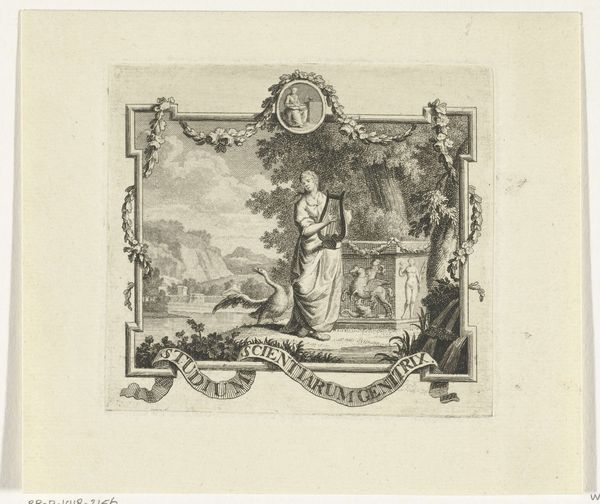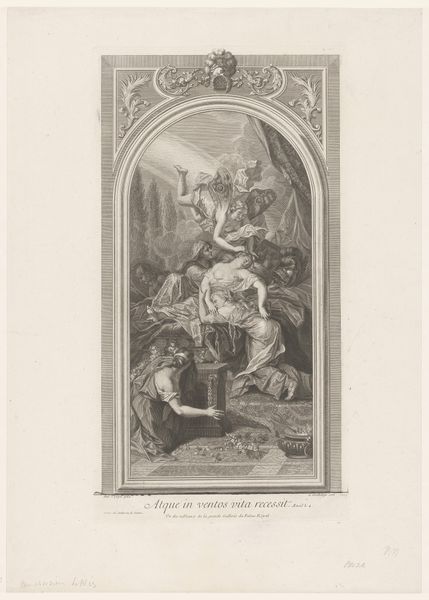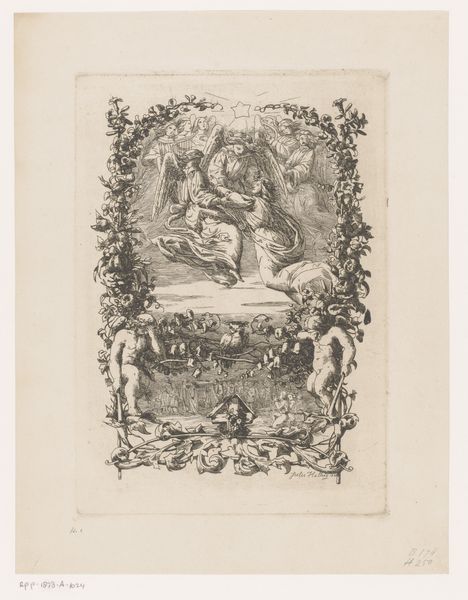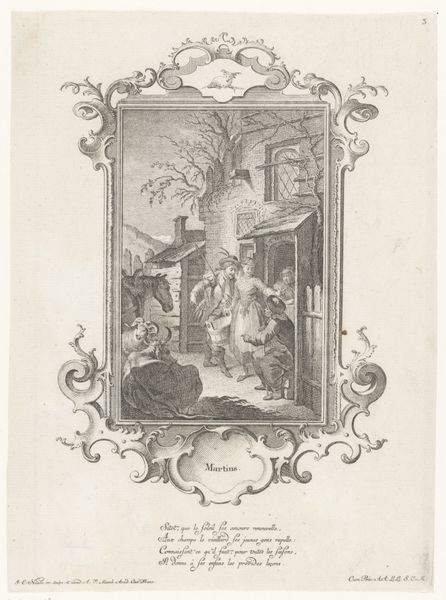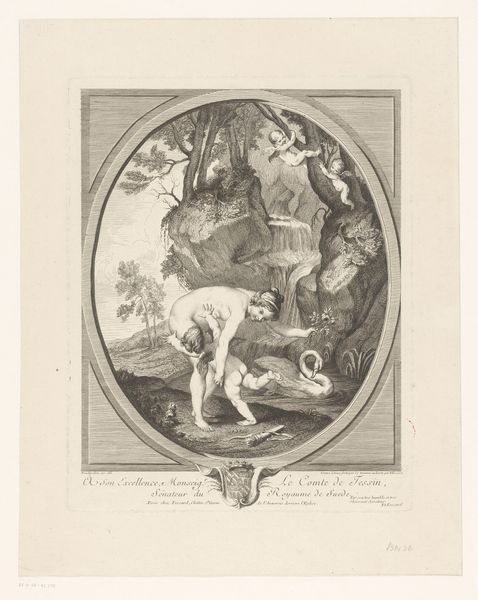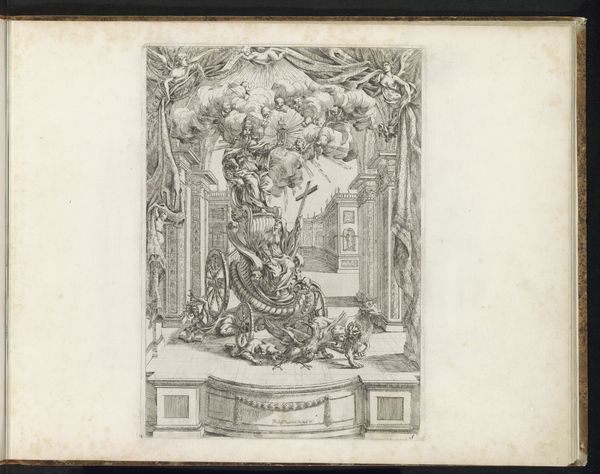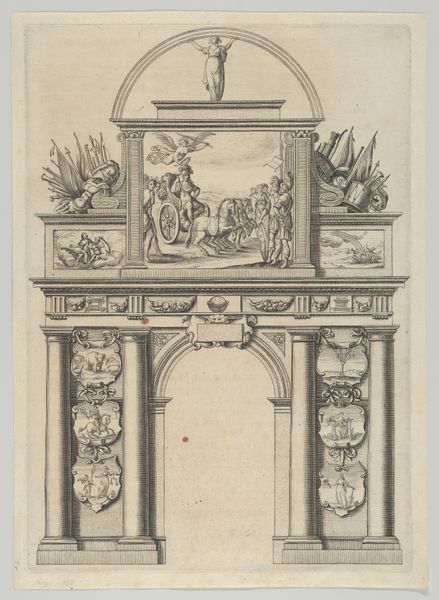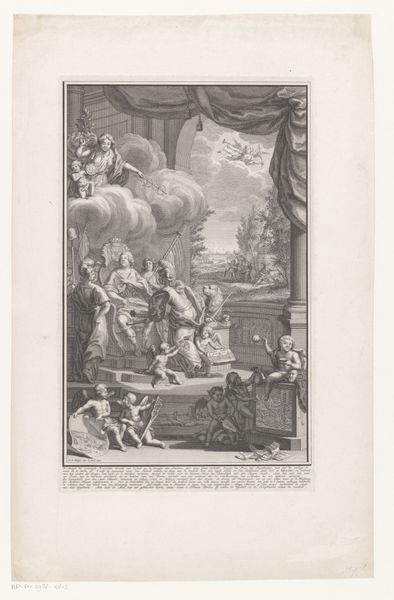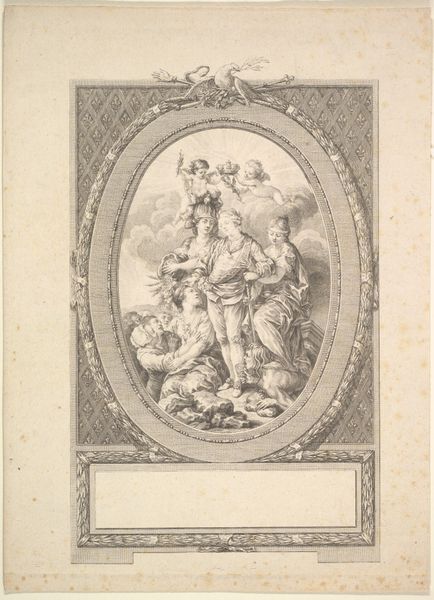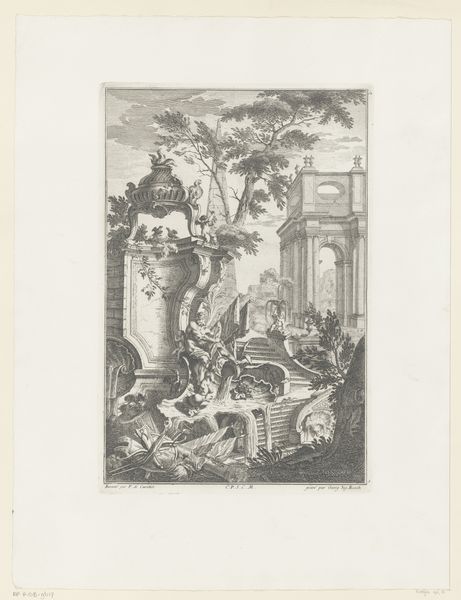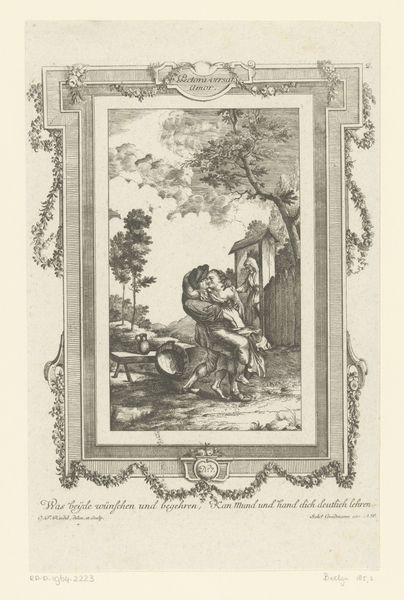
drawing, print, paper, engraving
#
tree
#
drawing
#
animal
# print
#
landscape
#
figuration
#
paper
#
romanticism
#
engraving
Dimensions: Image: 12 1/2 × 8 1/2 in. (31.8 × 21.6 cm)
Copyright: Public Domain
Editor: This is "Fronticepiece for Tasso's Poems" made sometime between 1785 and 1836 by Richard Westall. It's an engraving, so a print on paper. It feels…dreamy, idyllic even. The figures are framed so precisely. What strikes you about it? Curator: The framing itself is fascinating. It positions the depicted scene not just as illustration but as a monument. This artistic decision reflects the rising cultural status of poets and writers during the Romantic era. The publishing industry played a crucial role; such frontispieces promoted authors and shaped their public image. Editor: So it's not just decoration? It’s making a statement about Tasso himself? Curator: Precisely! The landscape and figuration contribute. Observe the figures' close embrace. Does it evoke any classical themes or ideals to you? Editor: Perhaps a muse? There's something about their pose... and is that an ox nearby? It feels like pastoral imagery, like an idealized countryside. Curator: The pastoral setting connects Tasso's work with notions of natural beauty and simplicity that were valued in Romanticism, although there is a darker complexity in the original writing of Torquato Tasso. Westall would have been familiar with the rise of national identity at the time, so consider how he is connecting the Italian poet with something timeless. Editor: So Westall isn’t just illustrating a poem, he is actively building Tasso’s legacy and reputation through imagery accessible to a wider public? Curator: Exactly! And the Metropolitan Museum acquiring this demonstrates the enduring appeal of Romanticism and the enduring importance of the printed image in museums, a constant interplay between cultural values, artistic production, and the formation of historical narratives. Editor: I never would have considered the museum itself as playing a role in shaping our view of art. Thanks! Curator: It’s fascinating how the simplest images can tell such complex stories.
Comments
No comments
Be the first to comment and join the conversation on the ultimate creative platform.

